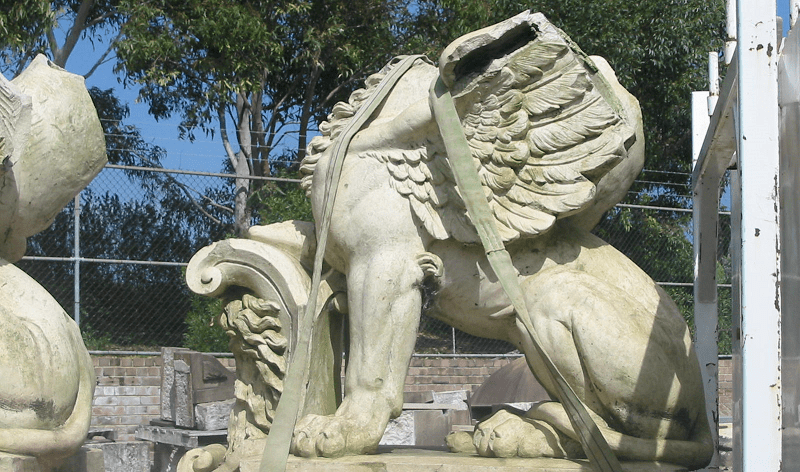Firstly, what is a Griffin?
The Griffin, according to Encyclopaedia Mythica, is a legendary creature with the head, beak and wings of an eagle, the body of a lion and occasionally the tail of a serpent or scorpion.
Its origin lies somewhere in the Middle East where it is found in the paintings and sculptures of the ancient Babylonians, Assyrians and Persians.
The later Romans used them for decoration and even in Christian times the Griffin motif often appears. Griffins were frequently used as gargoyles on medieval churches and buildings.
Griffins are usually heroic symbols. They are well known for their speed, ability to fly and having eyes like an eagle, as well as the strength and courage of a lion (there’s even more information about Griffins here if you’re interested).
But Centennial Park’s Griffins don’t have eagle heads
True. Although referred to as griffins, winged lions such as the ones seen in Centennial Park are not true griffins but a hybrid known as a ‘gryphonic’. True griffins have the face, beak, talons and wings of an eagle and the body of a lion.
So, what happened to the Griffins in Centennial Park after 1971?
The Griffins sat in the Centennial Park Depot for around 30 years. Then in December 2004, an opportunity arose to work with a consortium of organisations to fully restore and return the Griffins to Centennial Park (this consortia included the then Department of Commerce, Government Architects Office, Heritage Services, Maxim Consulting and Millennium Art Services).
 The Griffins, pre-restoration, are moved to the Government Stoneyard
The Griffins, pre-restoration, are moved to the Government Stoneyard
The modelling of the missing portions of the griffins was carried out on the existing griffins—allowing for complete accuracy. The modelling was guided by the catalogue supplied by Villeroy and Boch in Germany.
Once completed, the mould making process began. The missing elements were modelled in clay then coated with silicon rubber between 6-8mm thick. Once the rubber was cured, castings were made of a micro-ceramic composite material. 16mm stainless steel rods were set into the wings and head for reinforcement.